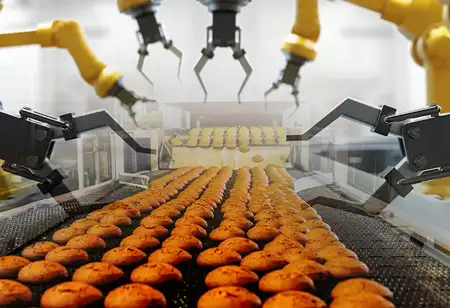THANK YOU FOR SUBSCRIBING
Be first to read the latest tech news, Industry Leader's Insights, and CIO interviews of medium and large enterprises exclusively from Food and Beverage Tech Review
Top Trends Transforming the Food Industry Functioning
As 2023 has started, technology continues to advance the food business.

By
Food and Beverages Tech Review | Monday, August 14, 2023
Stay ahead of the industry with exclusive feature stories on the top companies, expert insights and the latest news delivered straight to your inbox. Subscribe today.
According To research, 67 percent of food decision-makers aim to benefit the environment rather than merely avoid causing harm to it.
Fremont, CA: As 2023 has started, technology continues to advance the food business. Increasing environmental concerns about raising, manufacturing, and transporting food have prompted everyone, from farmers to huge brands and factories, to reduce their carbon footprints. Moreover, 67 percent of food decision-makers aim to benefit the environment rather than merely avoid causing harm to it.
Consequently, the food business is moving away from conventional farming techniques, food packing, and food transportation. Technology enters the picture, bringing robots, sensors, and kiosks. Consider how technology alters how businesses produce, distribute, and deliver food to the world. These are some examples of how the food sector is getting more inventive.
● Ready-to-Cook Frozen Side Dishes
People's hectic lifestyles also influence consumer food trends. Pre-seasoned and pre-cooked meal revenues are rising, particularly for side dishes. In previous years, more than 55 percent of US families purchased frozen side dishes at least twice weekly. These folks, however, are also looking for healthful solutions. Many say they desire additional frozen meal options, including fruits and vegetables or a combination of veggies and meat.
● New Tastes
People are looking to various cultures and flavors for a fresh eating experience as the world shrinks due to greater travel and global knowledge. As a result, innovative food & seasoning combinations will be increasingly popular. This tendency isn't limited to ethnic meals, and it offers unusual mashups, such as chaffless, which are egg and cheese waffles.
However, the food sector hasn’t only affected the rate of production but also a few of the industries related to the food sector. Let’s see how food industry branches are utilizing technology in their process.
● Retail
Food waste, keeping shelves supplied, good customer service, and long check-out queues are all challenges for retail establishments. Companies such as Walmart utilize robots to check for misplaced labels and out-of-stock or lost products to speed up placing food on the shelves. Furthermore, to eliminate waste, retailers use artificial intelligence to compute how much to order and scan and go to check-outs to prevent long queues from the building.
Further technical breakthroughs are coming as robotics and smart cameras evolve. Autonomous vehicles may soon bring groceries to one's door. Customer service lines may be dominated by cameras and robots that can discriminate between legitimate and bogus client problems. While businesses strive to balance human connection, they feel that speedier service through technology will ultimately triumph.
● Distributors
The figure below depicts the most severe issues in food delivery. According to the graph, driver shortages get the biggest detrimental influence on distribution. Driver tracking simplifies travel routes, making drivers highly efficient and reducing staffing requirements. Moreover, monitoring sensors track items across the distribution process, detecting faults and shortages. Sensors also monitor food temperature and humidity to maintain safe conditions.
I agree We use cookies on this website to enhance your user experience. By clicking any link on this page you are giving your consent for us to set cookies. More info







